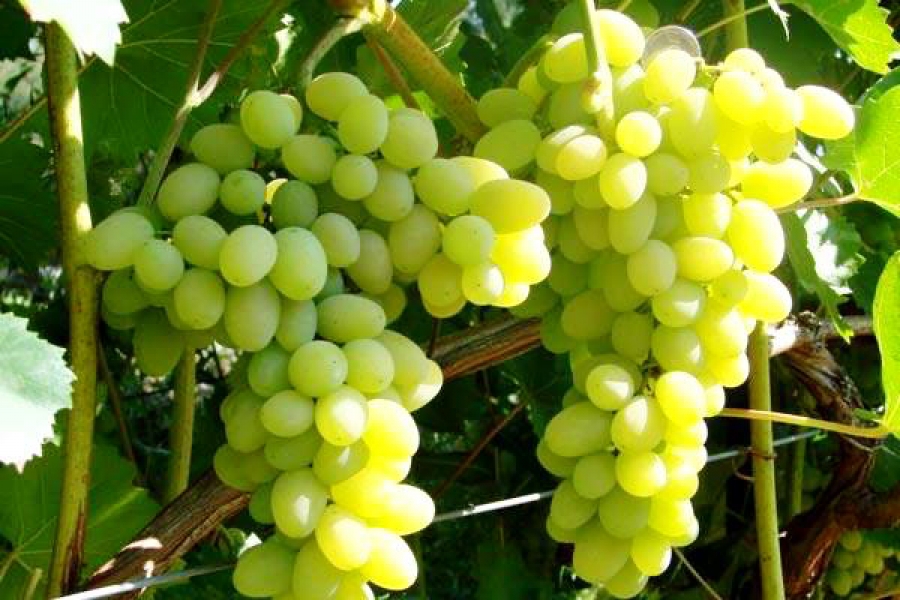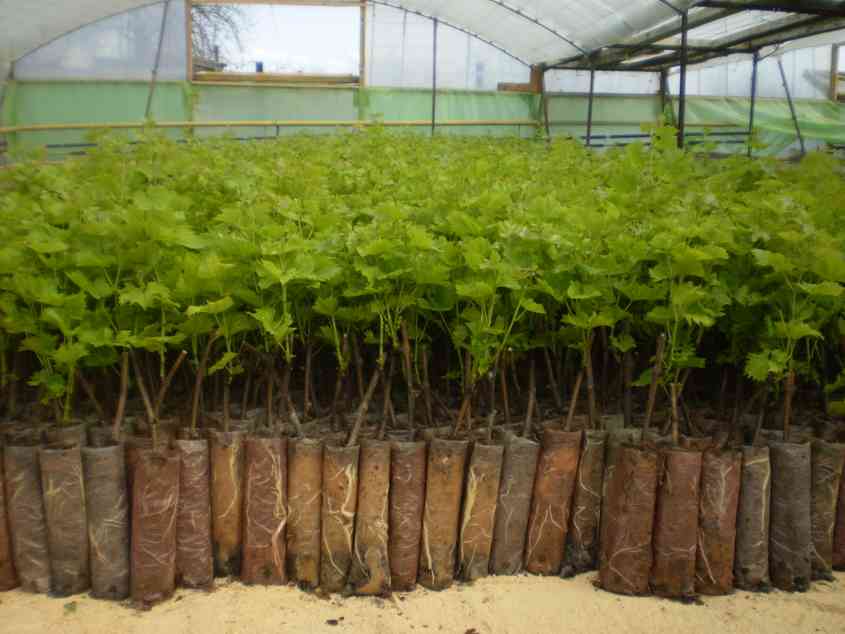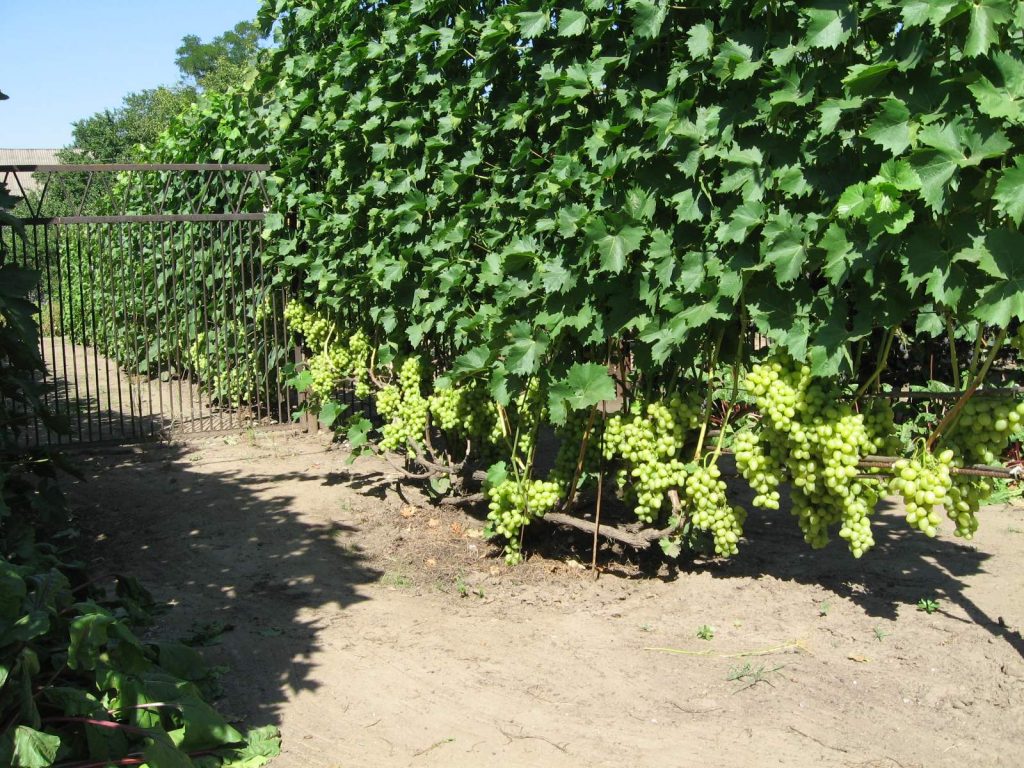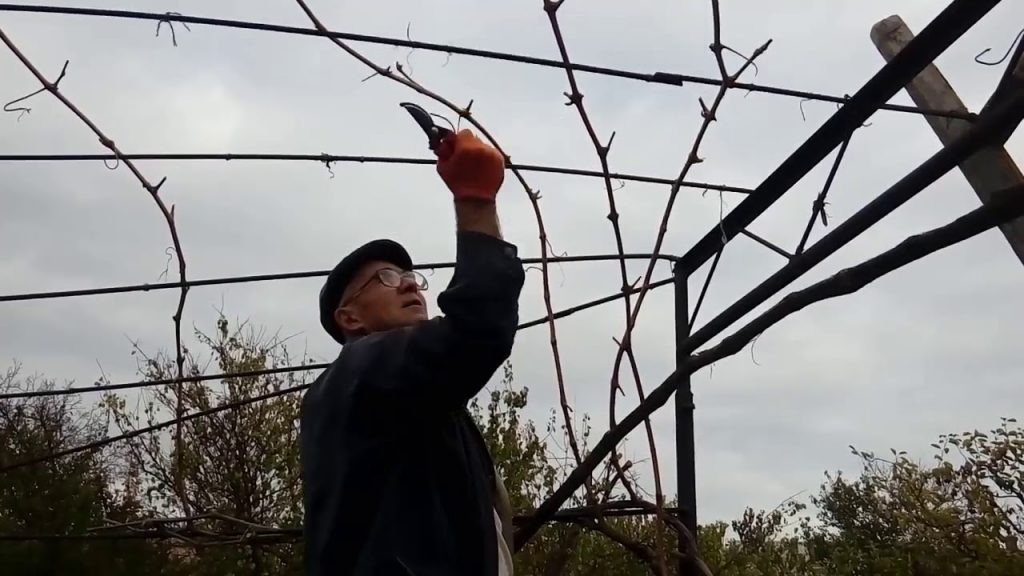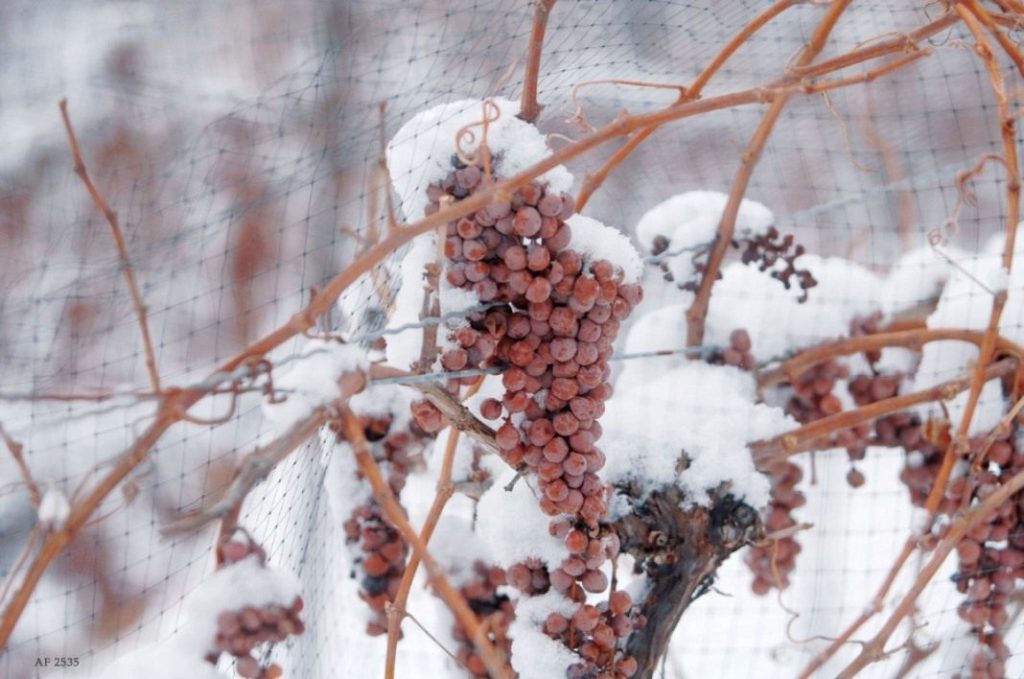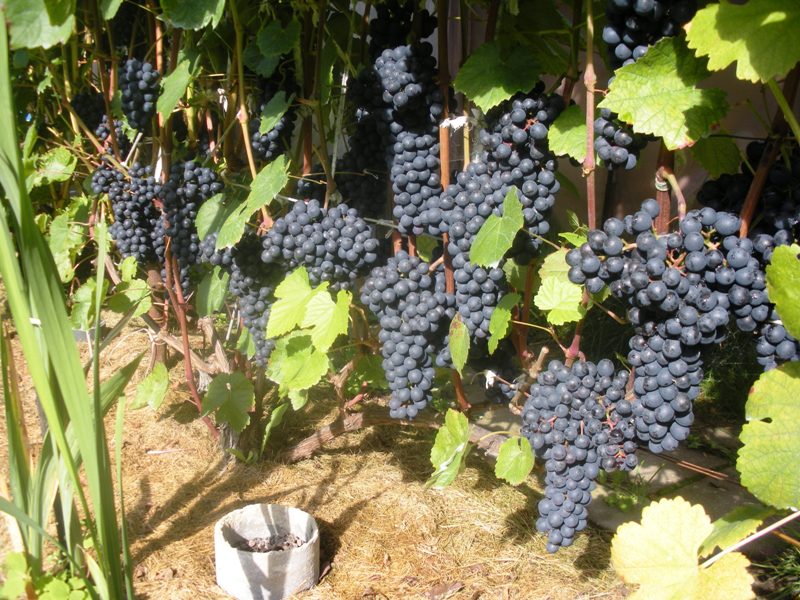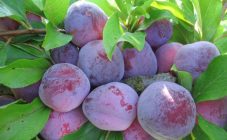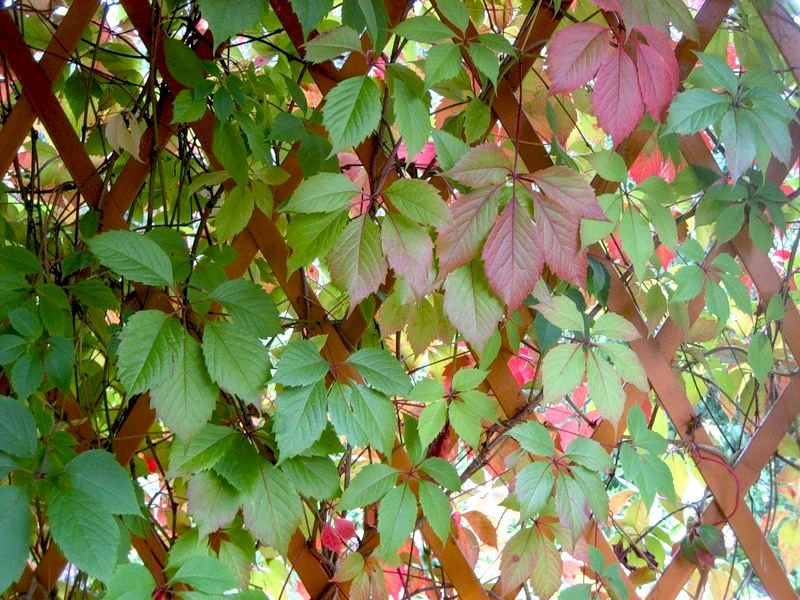Content:
Among the gardeners of Siberia, the opinion has long been formed that growing grapes in large volumes is a risky and ungrateful business. There are many reasons for this:
- The harsh climate with cold winters and abrupt changes in average daily temperatures does not allow plants to overwinter. Saplings freeze out, all the costs of beginners are useless.
- Plants that have successfully overwintered suffer from spring frosts. Delicate buds do not stand up and the gardener is left without a crop.
- Even if full-fledged bunches ripen on the bushes, early autumn frosts destroy summer growth.
You should not try to grow grapes using agricultural techniques of the southern regions, which did not give any results. Winegrowers have developed special frost-resistant varieties suitable for the harsh conditions of Siberia and a special technology for growing this thermophilic crop.
The first successes were achieved by agronomists from the Altai Territory. Here they learned to get a good harvest and began to cultivate new varieties with excellent taste characteristics, berries of various shapes and colors. The gardeners of Khakassia, Novosibirsk, Kemerovo and Omsk regions achieve excellent results.
Based on this positive experience, gardeners have developed a reliable system of Siberian viticulture.
How to choose a place for grapes
To make seedlings feel good on the site, choose a suitable open place:
- in winter, the vineyard should have a lot of snow, which will additionally cover the plantings. In the spring, water should quickly leave this place.
- in lowlands, plantings will die when groundwater rises or from cold moist air;
- in summer, the plantings should be illuminated and sufficiently ventilated throughout the day;
- vines grow well against the walls of the house or near fences on the south or southeast side.
How to prepare the ground
In the summer, the vine grows 5-10 cm per day. It is necessary to provide adequate nutrition for this.
If seedlings are planted without preparation in the ground, nutrients from the upper layer are quickly consumed. Because of this, the growth of plants stops and fruits cannot be expected from them.
With the onset of warm days, pits are prepared for future plantings, drainage is provided, and the necessary trace elements are added.
How to prepare a landing site:
- A trench 80 cm wide is dug to a depth of 30-40 cm. An additional 60 cm deep hole is dug under each bush in the trench, following the scheme: 2 meters between bushes and 3 meters between rows. In total, the depth is 90 - 100 cm.
- The top layer of soil is removed on a shovel bayonet, laid on one side, and the rest of the earth on the other.
- At the bottom of each pit, drainage is made from gravel, a shovel of wood or grass ash and a glass of superphosphate mixed with the ground are added. The soil with fertilizers is covered with branches, rough grass.
- The deposited topsoil, sand and humus are mixed (in a ratio of 1: 1: 0.5). Pits are filled with this mixture to the level of the bottom of the trench and left for 2-3 weeks.
- The walls of the trench 30 cm high are reinforced with boards or any other material in the form of a box.
With this preparation, the earth will have time to warm up well and the nutrients will be enough for many years without additional feeding.
Planting grapes for beginners in spring in Siberia
They begin to disembark when the time of frost passes and the earth warms up to 12-15 ° C.
Prepared pits are spilled with hot water and covered to ripen the ground.
It is better to plant grapes in the evening at sunset or on cloudy days to avoid sunburn.
Saplings that have wintered in the basement or in the cellar, before planting, are examined, removed, dry and damaged. The roots are shortened, leaving no more than 25 cm. 5-6 buds are left on the stems. Plants are soaked in warm water, adding sodium humate or heteroauxin, then dipped in a mash made of two parts of clay or earth and one part of fresh mullein.
Select the soil from the prepared pits and make a mound at the bottom. The roots are distributed along the entire length and carefully covered with earth, leaving a small depression. Sprinkle any mulch on top.
If a vegetative seedling is planted, that is, a sprout in a pot, they try not to damage the clod of earth.
Landings are covered as long as there is a threat of cold snaps, and shaded from the sun.
If the trellises are not ready, a stake is placed next to the bush and the shoots are tied vertically. So the vines grow well, it is convenient to care for them. Pour 1-2 buckets of water into each pit. Water the next time when the top layer dries.
Grapes in Siberia for beginners: planting and care
Watering the grapes is not often, but abundantly, depending on the condition of the soil. Light sandy soils are watered more often, and heavy clay soils less often.
Seedlings do not need additional feeding, but in the fall you can add phosphorus and potassium under the bushes. This contributes to better preparation for winter and accelerates the maturation of the wood.
It is not necessary to prune the grapes in the first two years, but immediately leave one or two strong branches. By the end of August, pinch points of growth and remove shoots that did not have time to woody.
Pruning
For budding gardeners, pruning is considered the most difficult procedure. It is enough to master simple rules to perform manipulations.
The grapes are pruned in two stages:
- Unripe, damaged, weak shoots and fertile vines are cut out after harvest. The plant will direct all its forces to prepare for winter.
- Before the onset of frost, the branches are prepared for future fruiting.
The crop is laid on one-year-old shoots. To do this, choose a strong branch and form a fruit link: one long fruiting shoot with 6-12 buds and a replacement knot with 2-3 buds. From the buds on a long shoot, the harvest grows the next year, and from a short knot - 2 young shoots, with which they do the same: one is cut into 6-12 buds, and the other - into 2-3 buds.
The stronger and older the bush, the more links are left:
- in the first 2-3 years, the plants are allowed to grow freely, but 3-4 strong shoots are immediately left, the rest are broken;
- in the first year of fruiting, 20 eyes are left on the bush;
- in the second year, 40 eyes are left;
- in the third year - 60 eyes;
- in the fourth year - 80 eyes;
- after the fifth year, up to 150 eyes are left.
Novice growers are advised to remove excess clusters when the result of pollination is visible. The number of bunches depends on their size and the characteristics of the variety. On large-fruited varieties, one bunch is left for the shoot, and on every third shoot, all the ovaries are removed. On other varieties - 1-3 clusters per shoot.
On average, 1 kg of berries are obtained from one shoot.
Preparing for winter
In late autumn, when the grapes have thrown off the leaves, the vines are laid horizontally and covered with a film or covering material to extend the growing season. With the onset of persistent cold weather, a dry, windy day is chosen and finally sheltered for the winter:
- check that the plants are dry;
- covered with sawdust, husks, needles;
- cover with film and any materials at hand;
- shields of boards, slate, roofing material are placed on the ditch;
- sprinkle with earth on top;
- make sure that no water gets into the shelter, the vines do not spill out during a sharp warming.
There are grape varieties that do not require shelter, which just bend down and make sure there is enough snow on top.
With the onset of warm days, you can dig up the ground and remove the shelter, but do it gradually, avoiding a sharp change in temperature.
The vines will remain under the film until the threat of frost is gone. Then you can remove the film, lift and tie the shoots to the trellises. Cut and burn moldy, rotten branches.
Siberian grape varieties
Even if all agronomic norms and rules are followed, it is not easy to achieve results if the wrong grape variety is selected. For Siberia, special frost-resistant early varieties have been bred that can withstand up to -40 ° C and give a crop.
Tukay
High-yielding variety. The berries ripen in 100 days.
It grows strongly in width, gives large yields, requires rationing.
Delicious amber-green fruits with dense skin are collected in large clusters up to a kilogram in weight.
Solovyova-58
By the end of summer, it has time to ripen. The whitish fruits have a strawberry-nutmeg taste, are suitable for fresh consumption, are used for wine and juice. Bunches weighing 200-300 g.
Grapes always take root, do not freeze and are not susceptible to disease. The bush is compact. It is necessary to ration the harvest and avoid a heavy load.
Memory of Dombkovskaya
Vigorous vigorous bushes with carved dark green leaves. The berries are large, black in color, ripen by the beginning of September. The bunches are large, loose. The variety is resistant to diseases and frost.
Sharov's riddle
A widespread variety in the gardens of Siberia. The fruits ripen at the end of August. The berries are dark blue, large, with juicy fragrant pulp, collected in medium-sized clusters. Cut clusters are stored for a long time.
Codryanka
The high-yielding variety is resistant to diseases, withstands frosts down to -22 ° C, ripens in 3 months. The berries are large, up to 8 g, purple in color and have a pleasant taste. The brushes are large, weighing up to 1.5 kg.
About 80 hybrids and varieties were bred for the Siberian region. When purchasing seedlings, they pay attention to growth, resistance to diseases, winter hardiness, size, taste and color of berries. It is safer to buy planting material from specialized nurseries.
The Vorontsovs' nursery in Novosibirsk has established itself well, there are nurseries in Barnaul, Krasnoyarsk, Irkutsk ... You can take cuttings and seedlings from experienced gardeners. You cannot buy grapes from random sellers. There is a danger of taking infected plants or unsuitable for the local climate.
It is not easy to grow grapes in Siberia, but if you follow the recommendations of experienced gardeners, you can achieve harvests no worse than the southern ones. The following principles must be followed:
- choose only zoned varieties of local selection;
- provide regular feeding and watering;
- make sure that the plants do not freeze in winter and do not vomit during warming;
- harden grapes for resistance to temperature changes;
- ration the harvest, avoid overloading the vine;
- carry out autumn pruning in two stages.
Taking care of grapes in spring in Siberia will not cause any special problems. Even in Siberian conditions, you can grow a decent harvest.
